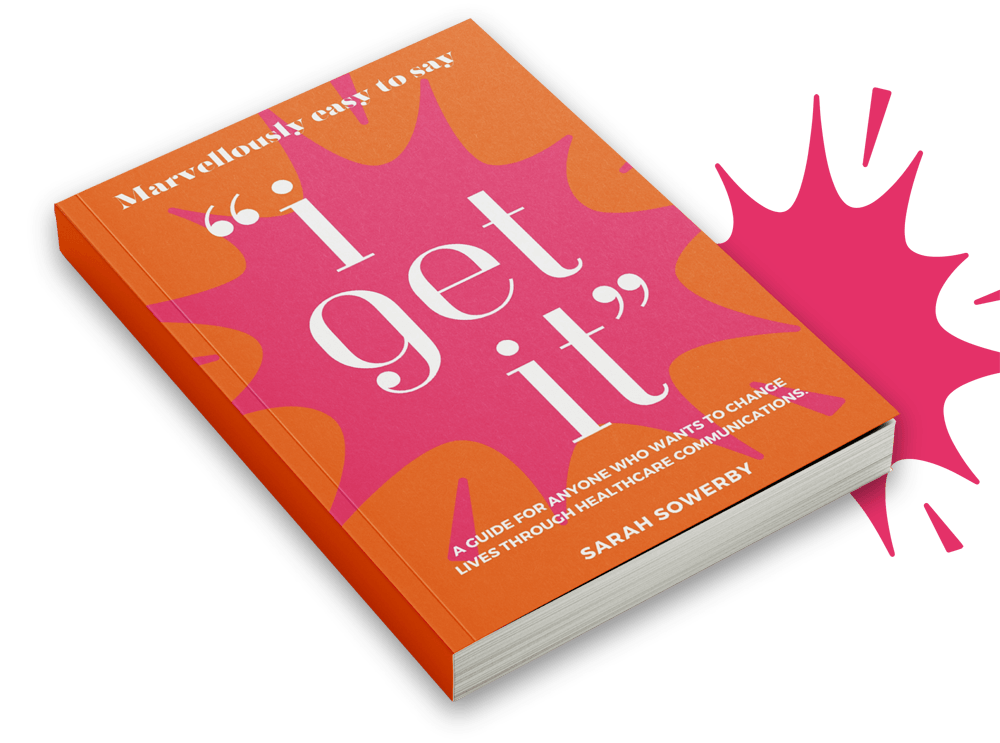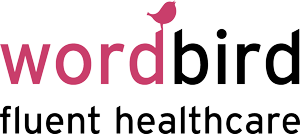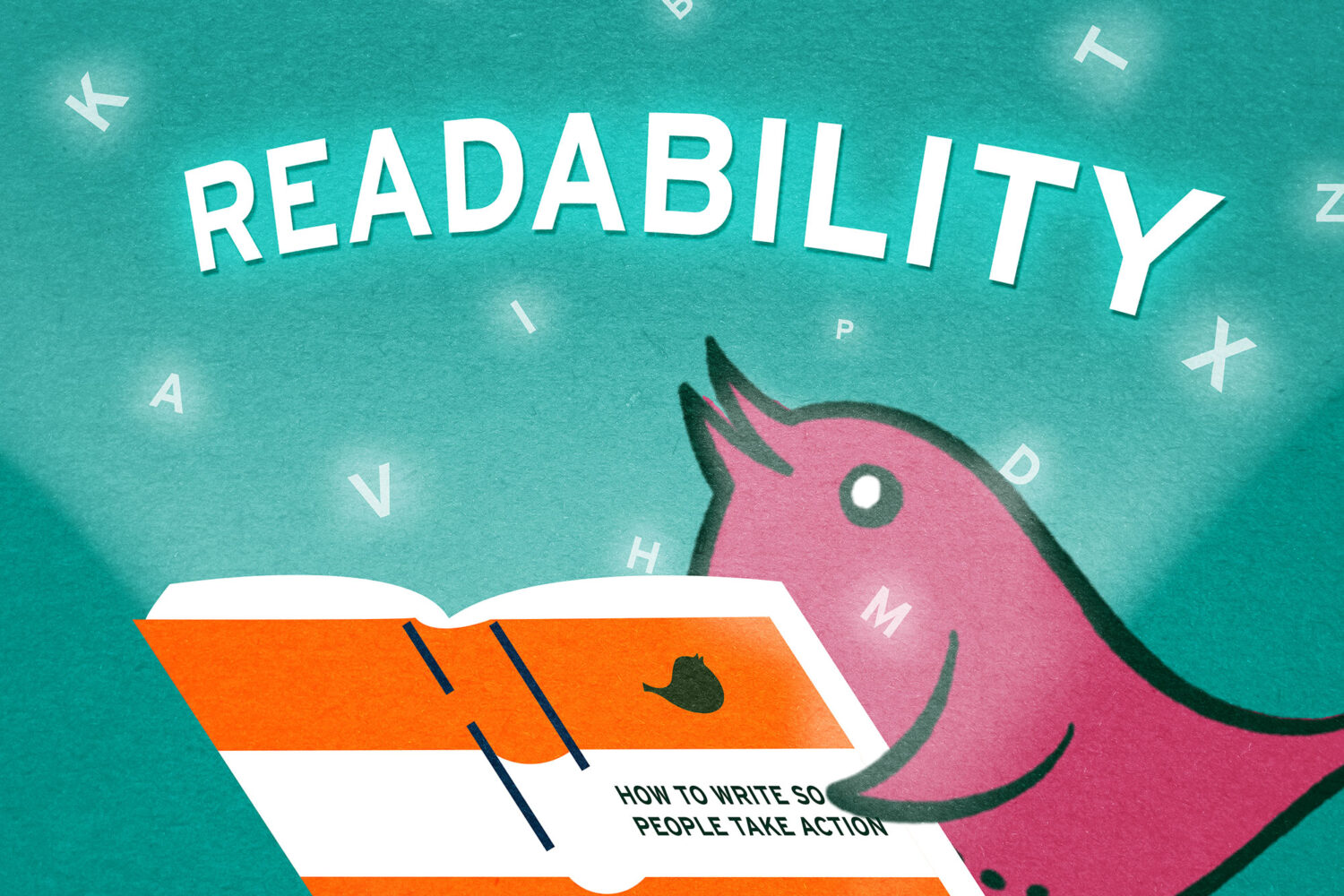Readability – how to write so people take action
by
Do you ever read something again and again, but still not feel you have taken it in? The paragraph in that report you have read five times and still have no clue what it’s about? Let me reassure you; it’s not you. The problem lies with the writing – or more importantly the readability.
I’ve dedicated my professional life of over 32 years to the business of readability first as a copywriter, then editor, trainer, mentor and now business leader. In short, I’ve been championing readability my whole career. In fact, my company’s purpose is to make it marvellously easy to say ‘I get it’.
So what is readability? I define it as ‘something you can read quickly and easily, process effortlessly and act upon.’
Let’s think about a fascinating news article. You read it. Take the information in and then your brain does something with that information. Maybe it encodes it in a way that means you discuss it over dinner with a friend. Or maybe you click through to discover more. Or maybe you save the content for use later. That content sticks in your head because it has high readability.
Five aspects of readability
- Relevant content
- Minimal jargon or complex words
- A mix of short and long sentences
- No unnecessary punctuation
- Avoidance of ‘filler’ words
Let’s look at each in more detail, as they apply to healthcare communications.
1. Relevant content
The father of modern advertising, Bill Bernbach, described the job of advertising as bringing the dead facts to life. In scientific communications there are a lot of dead facts. Our job is to wake them up, join them up and tell our wonderful, irresistible stories in a way that connects with our audiences in a very human way. Yes, healthcare professionals are humans too. And they like to be spoken to as the caring, compassionate people they really are.
2. Minimal jargon or complex words
Business jargon is an insidious virus that can infect us all. Much of the time we haven’t even noticed that we are ‘utilising some blue sky thinking to co-create a new paradigm in our multi-disciplinary stakeholder cohort’. Using language that only a select group of people can understand is great for creating a fraternal feeling amongst close colleagues. But it can be a big barrier to mass communication. At Wordbird we never use a complex word when a simple one will do. We choose use over utilise; we agree rather than align; things are never pending, but always waiting; we don’t net out, we end up; and at Wordbird we never, never call our team members a resource, which most people tell me is deeply insulting.
Health jargon can be in a league of its own. These examples on The Plain English Campaign’s website make me want to weep.
On a more joyful note, a great exercise in communicating with simplicity is to buy The Sun and The Mirror newspapers. Their skilled journalists are brilliant at taking the big news stories of the day and distilling them into something that everyone can understand. The tabloids recognise that many of their readers have lower literacy levels and write accordingly.
At Wordbird we always run our consumer materials through the Gunning Fog Index to get our work below a reading age of 12 years. Often we succeed – until the work goes through approval! Then we need approvers, who champion simplicity, to work with us to achieve compliance and readability. Many Patient Information Leaflets (PILs) inside medicine packs have a high Fog Index. Why not check yours?
In medical communications we also consider health literacy. Watch out for a future blog on this.
3. A mix of short and long sentences
A nice rhythm makes reading easier. Rhythm is created by a mix of long and short sentences. Long sentences should be no more than 15-20 words. Short sentences can be just a few words. Like this.
People are often scared of a short sentence. But short sentences can add drama, emotion or gravitas. Go on. Have a go! Master the short sentence and boost your readability.
4. No unnecessary punctuation
Good punctuation helps readability. But it’s easy to go too far. Every punctuation mark causes your reader to pause to interpret it. The more punctuation there is, the more pauses the reader must make. Editors of novels often use this to their advantage by minimising punctuation so the reader can keep the pages turning. We can use it to our advantage too in creating easy-to-read content.
These two pieces of text have the same message. Which do you find easier to read?
Please bring a dish to the party (e.g. a starter, a main course or a pudding). Don’t forget to label your container if you want it back (i.e. with a Sharpie so it doesn’t fall off when getting washed up) and remember, no nuts!
Please bring a dish to the party e.g. a starter, a main course or a pudding
Label your container with a permanent marker if you want it back
Remember, no nuts!
The first version has nine punctuation marks and the second, just three. In the second some of the full points have been replaced by a line break – another readability top tip.
Finally, if you can avoid using title case in headings, this will also help speed readers whizz through your content.
5. Avoidance of filler words
When we are taught to write in educational settings we write to pass exams, not to communicate clearly.
For example, students writing a ten thousand word dissertation usually pad out their work with lots of unnecessary words (therefore, hence, considering and my least favourite, ‘a number of factors’). They also tend to use lots of very long sentences. It all adds up to a document that can be really hard to read. When we train writers here, the first thing we do is ditch the ‘fillers’. Fewer ‘fillers’ will also improve your Fog Index.
Self-awareness is a wonderful thing, so how readable are your health communications? Are you the king or queen of jargon? Or a long-sentence lover? Maybe your punctuation lacks discipline? We can all be better, everyday. So what small steps could you take to inspire better readability for yourself and your organisation?
If you have found this an easy and helpful read, follow us on Linkedin or Instagram and check out our website.
Further reading
1. Who touched base in my thought shower? A treasury of unbearable office jargon by Stephen Poole.
2. Plain English Campaign
3. Publication Coach
4. Visual Thesaurus



 Back
Back







